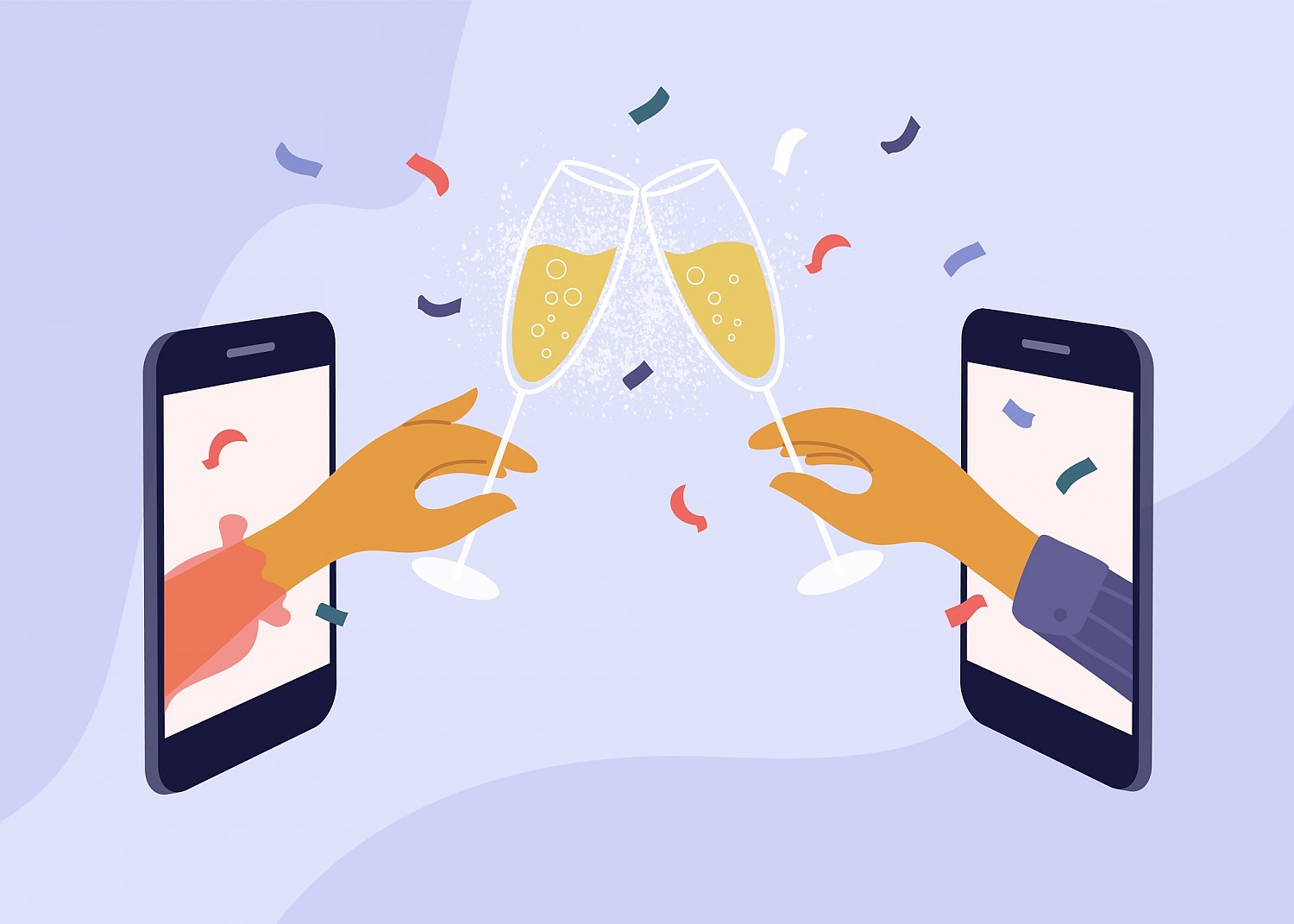2021 Web Design Wrap-up
A New Year approaches and with its arrival we thought the time had come to do a web design wrap up of the 6 trends that left a mark in 2021.
A New Year approaches and with its arrival we thought the time had come to do a web design wrap up of the 6 trends that left a mark in 2021.

1. Parallax Animations
Parallax Animations are far from being something new, however their popularity doesn’t seem to wear down. The Parallax effect is nothing more than an optical illusion, where the background moves in a slower pace than the elements in the foreground.
In practical terms, this effect creates a sense of depth/tridimensionality, hence embracing the user in an overall immersive experience. Nevertheless, this effect should be used with a certain degree of moderation, since in excess it may reveal itself a source discomfort for the user.
Click here to browse a few websites with parallax animations.
2. Custom Cursors
There’s no doubt that the devil’s in the details. Following this proverb, we find that custom cursors are increasingly used in websites. The cursor is an essential element, however none or little attention is given to it, unless its original form has been visibly altered.
Some companies use the cursor as “brand image reinforcer” (such as BT Annual Reports; Magnetism; The New Company), or to complement the website’s general concept (e.g. Skolokovo Park, Monopo London). In general, custom cursors provide an aesthetically pleasing element and interesting browsing experiences, however they may not be the best option for more corporate websites, which target very specific user profiles and have clear-cut goals.
3. Horizontal Scrolling
It is essential that the user finds the website’s navigation straightforward and intuitive. Vertical scrolling continues to be the most common form of navigation. However, there are cases in which horizontal scrolling can be a great option, especially regarding small scale websites. For instance, catalogues, portfolios, online company reports are all websites which could benefit from a horizontal animation.
Horizontal navigation grants a fun and memorable aspect to the website; however it may not be the ideal choice for larger scaled websites. Here are some examples of websites which use horizontal scrolling: Le Cantiche 1320, Foam Talent, Mauritshuis, Tripolis Park, The LA Art Box.
4. Minimalism
Overwhelming webpages with content is a thing of the past. There is no need have to disclose all the information onto one single page, in fact, this may cause the user to flee rather than stay on your website. A tip: Web pages don’t run out, use them to dilute the content to provide a more pleasant user experience.
Minimalism is one of web design’s most enduring trends. Although it has obvious aesthetic implications, minimalism, more importantly derives from a simple exercise where you sort out the essential from the nonessential. Removing superfluous content, letting the design breathe, acknowledging the importance of white space, creating signature moments, are all elements that help the company’s message get across loud and clear.
Some examples of websites that follow this trend: Food Compliance International, Melriver, Margate House Films, Albed.
5. Content Customization (e.g. geo-locations and browsing history)
Nowadays it’s quite common to come across a website where its content adapts automatically to whoever is viewing it. A well-developed website is able to adapt both the language according to the user’s location (for instance, if the user is in Angola the website will appear in Portuguese, if he is in the US it will appear in English), as well as the content to fit the user’s profile (which is based on his navigation history saved on his browser).
There is no doubt that a website’s ability to automatically display specific content based on each user’s online behavioral pattern is pivotal to an online store’s sales performance. Even if your company doesn’t do business through an e-commerce platform, it is important to remember that a website is nonetheless a business card on steroids. Depending on your company’s goals, your conversion rate may even be measured offline with the contact of a potential client (e.g., design or architecture studios, law firms, etc.). Needless to say, the probability of converting a mere visitor into a loyal client increases significantly if you have a modern, captivating, user friendly website.
6. Light mode vs. Dark mode
We’ve gotten used to seeing the dark mode on our phones, however it’s become increasingly common to see it applied to all sorts of websites. Besides being more energy efficient, the dark mode feature is known to improve the user’s experience (e.g., reduces eyestrain, prevents migraines and reduces alertness, making it easier to fall asleep).